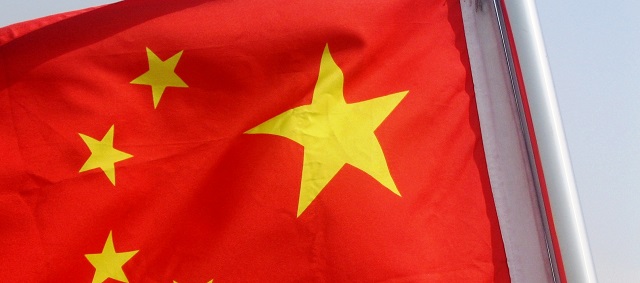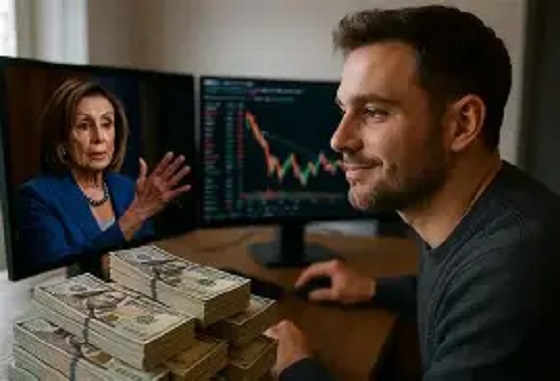Business
EXCLUSIVE: US Is Failing To Counter Threat Of Chinese Land Ownership, Report Finds

 From the Daily Caller News Foundation
From the Daily Caller News Foundation
The United States government is not appropriately addressing the threat posed by growing Chinese ownership of American land, according to a report released by the Heritage Foundation Thursday.
The federal government is woefully ill-equipped to track Chinese-owned real estate in the country, despite the serious threat these Chinese Communist Party-affiliated entities can pose to critical U.S. infrastructure, according to the report. The report calls on federal and state leaders to take action, such as increasing transparency and conducting more critical reviews of land purchases.
“China’s ownership of American land is nontransparent and unscrutinized, and the federal government has failed to address potential threats even as Chinese ownership of U.S. real estate increases,” Bryan Burack, a senior policy advisor for the Heritage Foundation and author of the study, told the Daily Caller News Foundation.
The federal government lacks an adequate system in place to broadly monitor Chinese ownership of U.S. real estate, due to ownership of real estate being overseen by state and local governments, the report notes. For this reason, the U.S. government has no clear picture on China’s total land holdings in the country.
“The United States should be watching land and real estate transactions from our top adversary, not ignoring them,” Burack said.
The Daily Caller News Foundation has reported extensively on Chinese companies’ land purchases in the U.S. For instance, the parent company of battery maker Gotion, which plans to build factories in Michigan and Illinois, participated in Chinese Communist Party (CCP) programs that acquire technology for China’s military, the DCNF reported. The DCNF also exposed the CCP ties of companies attempting to set up shop near military bases in Kansas.
Smithfield Foods, America’s largest pork producer, is owned by a Chinese firm and exported massive quantities of pork to its China-based “sister company” as that company stockpiled food for the Chinese military, the DCNF exclusively reported.
Chinese entities have spent over $100 billion acquiring American companies since 2010, with many of these businesses owning real estate across the country, according to the report. In 2020, the National Association of Realtors confirmed that China was the top foreign buyer of American real estate.
The Agricultural Foreign Investment Disclosure Act (AFIDA) does give some insight into the amount of agricultural land being purchased by foreign entities. The latest AFIDA report indicates that Chinese investors own a relatively small fraction of the country’s privately held agricultural land, holding only 346,915 acres, or roughly one percent, of foreign-held acres of private land, as of December 31, 2022.
However, Chinese-owned agricultural acreage grew over five-fold between 2011 and 2021, the report found.
This trend is worrisome because the Chinese government has made numerous, well-publicized attempts to gain access to key locations within the U.S.
Examples the report highlights include China’s attempt to equip a pagoda with signal collection technology and gift it in Washington, D.C., an attempt by a Chinese billionaire to build a wind development project near Laughlin Air Force Base in Val Verde County, Texas, and an attempt by a Chinese agribusiness to develop a cornmeal project just 12 miles from Grand Forks Air Base.
“In both the Val Verde and Grand Forks cases, existing federal government mechanisms proved manifestly unable to contend with threats that were clearly perceivable to the Americans living nearby — as well as, seemingly, to the Defense Department itself,” the report says. “Frighteningly, China’s threat to U.S. military infrastructure only continues to evolve.”
The Heritage Foundation recommended the federal government and state lawmakers enact laws to better equip the country for this growing threat.
“The threat posed by Chinese entities purchasing real estate in the U.S. and using it for malign purposes is real,” the report concludes. “As China presents the United States’ greatest national security threat and has a history of particular threats to real estate and agricultural land, measures to counter those threats must be a priority.”
Business
What Pelosi “earned” after 37 years in power will shock you

Nancy Pelosi isn’t just walking away from Congress — she’s cashing out of one of the most profitable careers ever built inside it. According to an investigation by the New York Post, the former House Speaker and her husband, venture capitalist Paul Pelosi, turned a modest stock portfolio worth under $800,000 into at least $130 million over her 37 years in office — a staggering 16,900% return that would make even Wall Street’s best blush.
The 85-year-old California Democrat — hailed as the first woman to wield the Speaker’s gavel and infamous for her uncanny market timing — announced this week she will retire when her term ends in January 2027. The Post reported that when Pelosi first entered Congress in 1987, her financial disclosure showed holdings in just a dozen stocks, including Citibank, worth between $610,000 and $785,000. Today, the Pelosis’ net worth is estimated around $280 million — built on trades that have consistently outperformed the Dow, the S&P 500, and even top hedge funds.
The Post found that while the Dow rose roughly 2,300% over those decades, the Pelosis’ reported returns soared nearly seven times higher, averaging 14.5% a year — double the long-term market average. In 2024 alone, their portfolio reportedly gained 54%, more than twice the S&P’s 25% and better than every major hedge fund tracked by Bloomberg.
Pelosi’s latest financial disclosure shows holdings in some two dozen individual stocks, including millions invested in Apple, Nvidia, Salesforce, Netflix, and Palo Alto Networks. Apple remains their single largest position, valued between $25 million and $50 million. The couple also owns a Napa Valley winery worth up to $25 million, a Bay Area restaurant, commercial real estate, and a political data and consulting firm. Their home in San Francisco’s Pacific Heights is valued around $8.7 million, and they maintain a Georgetown townhouse bought in 1999 for $650,000.
The report comes as bipartisan calls grow to ban lawmakers and their spouses from trading individual stocks — a move critics say is long overdue. “What I’ll miss most is how she trades,” said Dan Weiskopf, portfolio manager of an ETF that tracks congressional investments known as “NANC.” He described Pelosi’s trading as “high conviction and aggressive,” noting her frequent use of leveraged options trades. “You only do that if you’ve got confidence — or information,” Weiskopf told the Post.
Among her most striking trades was a late-2023 move that allowed the Pelosis to buy 50,000 shares of Nvidia at just $12 each — less than a tenth of the market price. The $2.4 million investment is now worth more than $7 million. “She’s buying deep in the money and putting up a lot of money doing it,” Weiskopf said. “We don’t see a lot of flip-flopping on her trading activity.”
Republicans blasted Pelosi’s record as proof of Washington’s double standard. “Nancy Pelosi’s true legacy is becoming the most successful insider trader in American history,” said RNC spokesperson Kiersten Pels. “If anyone else had turned $785,000 into $133 million with better returns than Warren Buffett, they’d be retiring behind bars.”
Business
Ottawa should stop using misleading debt measure to justify deficits

From the Fraser Institute
By Jake Fuss and Grady Munro
Based on the rhetoric, the Carney government’s first budget was a “transformative” new plan that will meet and overcome the “generational” challenges facing Canada. Of course, in reality this budget is nothing new, and delivers the same approach to fiscal and economic policy that has been tried and failed for the last decade.
First, let’s dispel the idea that the Carney government plans to manage its finances any differently than its predecessor. According to the budget, the Carney government plans to spend more, borrow more, and accumulate more debt than the Trudeau government had planned. Keep in mind, the Trudeau government was known for its recklessly high spending, borrowing and debt accumulation.
While the Carney government has tried to use different rhetoric and a new accounting framework to obscure this continued fiscal mismanagement, it’s also relied on an overused and misleading talking point about Canada’s debt as justification for higher spending and continued deficits. The talking point goes something like, “Canada has the lowest net debt-to-GDP ratio in the G7” and this “strong fiscal position” gives the government the “space” to spend more and run larger deficits.
Technically, the government is correct—Canada’s net debt (total debt minus financial assets) is the lowest among G7 countries (which include France, Germany, Italy, Japan, the United Kingdom and the United States) when measured as a share of the overall economy (GDP). The latest estimates put Canada’s net debt at 13 per cent of GDP, while net debt in the next lowest country (Germany) is 49 per cent of GDP.
But here’s the problem. This measure assumes Canada can use all of its financial assets to offset debt—which is not the case.
When economists measure Canada’s net debt, they include the assets of the Canada Pension Plan (CPP) and the Quebec Pension Plan (QPP), which were valued at a combined $890 billion as of mid-2025. But obviously Canada cannot use CPP and QPP assets to pay off government debt without compromising the benefits of current and future pensioners. And we’re one of the only industrialized countries where pension assets are accounted in such a way that it reduces net debt. Simply put, by falsely assuming CPP and QPP assets could pay off debt, Canada appears to have a stronger fiscal position than is actually the case.
A more accurate measure of Canada’s indebtedness is to look at the total level of debt.
Based on the latest estimates, Canada’s total debt (as a share of the economy) ranked 5th-highest among G7 countries at 113 per cent of GDP. That’s higher than the total debt burden in the U.K. (103 per cent) and Germany (64 per cent), and close behind France (117 per cent). And over the last decade Canada’s total debt burden has grown faster than any other G7 country, rising by 25 percentage points. Next closest, France, grew by 17 percentage points. Keep in mind, G7 countries are already among the most indebted, and continue to take on some of the most debt, in the industrialized world.
In other words, looking at Canada’s total debt burden reveals a much weaker fiscal position than the government claims, and one that will likely only get worse under the Carney government.
Prior to the budget, Prime Minister Mark Carney promised Canadians he will “always be straight about the challenges we face and the choices that we must make.” If he wants to keep that promise, his government must stop using a misleading measure of Canada’s indebtedness to justify high spending and persistent deficits.
-

 Business2 days ago
Business2 days agoCarney’s Deficit Numbers Deserve Scrutiny After Trudeau’s Forecasting Failures
-

 Business2 days ago
Business2 days agoHere’s what pundits and analysts get wrong about the Carney government’s first budget
-

 Alberta1 day ago
Alberta1 day agoTell the Province what you think about 120 km/h speed limit on divided highways
-

 International2 days ago
International2 days agoKazakhstan joins Abraham Accords, Trump says more nations lining up for peace
-

 Business2 days ago
Business2 days agoCarney budget doubles down on Trudeau-era policies
-

 Automotive2 days ago
Automotive2 days agoElon Musk Poised To Become World’s First Trillionaire After Shareholder Vote
-

 National14 hours ago
National14 hours agoNew Canadian bill would punish those who deny residential indigenous schools deaths claims
-

 Business1 day ago
Business1 day agoBill Gates Gets Mugged By Reality






